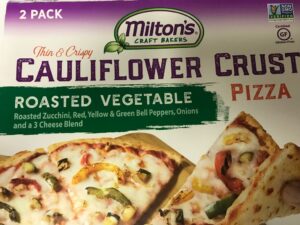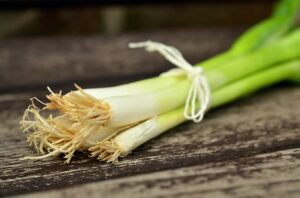My Least Favorite Vegetable and a Challenge
At week #27 baby is the size of…
…a head of cauliflower.
Most of you know that I do not care for this vegetable. I’ve tried.
Truth is that cauliflower is very beneficial for good health. 
It contains some of almost every vitamin and mineral you need. It’s high in fiber, water, choline, and contains antioxidants, which means it helps with weight loss, reduces inflammation, and protects against several diseases. Cauliflower is also rich in sulforaphane, a plant compound that helps reduce the risk of cancer, heart disease and diabetes.
Cauliflower appears to be the perfect child of the vegetable world. Lucky for me, it’s not the only perfect child. Broccoli is a bit healthier, in terms of fiber, vitamin, and mineral content.
AND it’s green.
I’ll stick with enjoying broccoli, thank you very much.
You can substitute cauliflower to reduce your carbs, if you feel so inclined.
- Cauliflower rice–grate, then sauté. (I have eaten it this way and it’s acceptable, however I don’t make a habit of it.)
- Cauliflower mash–in place of mashed potatoes.
- Cauliflower pizza crust–tried a commercial pizza with this and never knew it was cauliflower. It even fooled Mr. Non-Compliant.
- Cauliflower hummus–use cauliflower in place of chickpeas when making hummus.
- Cauliflower tortillas
- Batter-fried cauliflower–this is not a good idea at all and actually increases your carb intake. Just say, “NO.”

If you like cauliflower, eat it often. You can roast it, steam it, sauté it, add it to soups, stews, stir-fries, or casseroles. Raw cauliflower is on many a crudités platter.
If you’re like me, it’s okay to skip it. There are lots of other nutritious vegetables in the produce section.
Remember, we’re not striving for perfection. We’re always trying to do just a little bit better.
********
To say that 2021 has been quite a year after only a week, seems to me, an understatement.
I’ve been challenged in maintaining focus, even with meditation, exercise, prayer, and eating my daily salad.
My health/continuing education studies of late have taken me to the land of mindful, conscientious eating and living.
I’ll keep it simple. Whatever your eating behaviors, they are related in some way to what is or is not, happening in your life.
Everything affects everything.
What I’m challenging us (yes, I’m in on this) to do in the coming week, is to pay a bit more attention to our food and the way we are living.
If you have set the intention to live healthier, what does that look like on a daily basis? Get specific and keep it simple.
If you eat food from a package, have you looked at the ingredients on the label? Are the contents REALLY what you’d like to ingest for optimal health? Or perhaps for comfort?
When I eat a bowl of ice cream, or a salad, why am I eating it? What purpose is it serving? 
Begin this week to get conscious of your food and your life. Maybe you already are, and I applaud you.
Noticing what you eat and why you eat it, and why you do anything you do, is interesting. It gives you the opportunity to make any corrections that seem appropriate.
I’m here if you need me.
Much love,
Carol
“When you speak to yourself, let your interior dialogue be confident, optimistic, and visionary. Dare to live the life most people only fantasize about.”—Matthew Kelly, The Rhythm of Life








